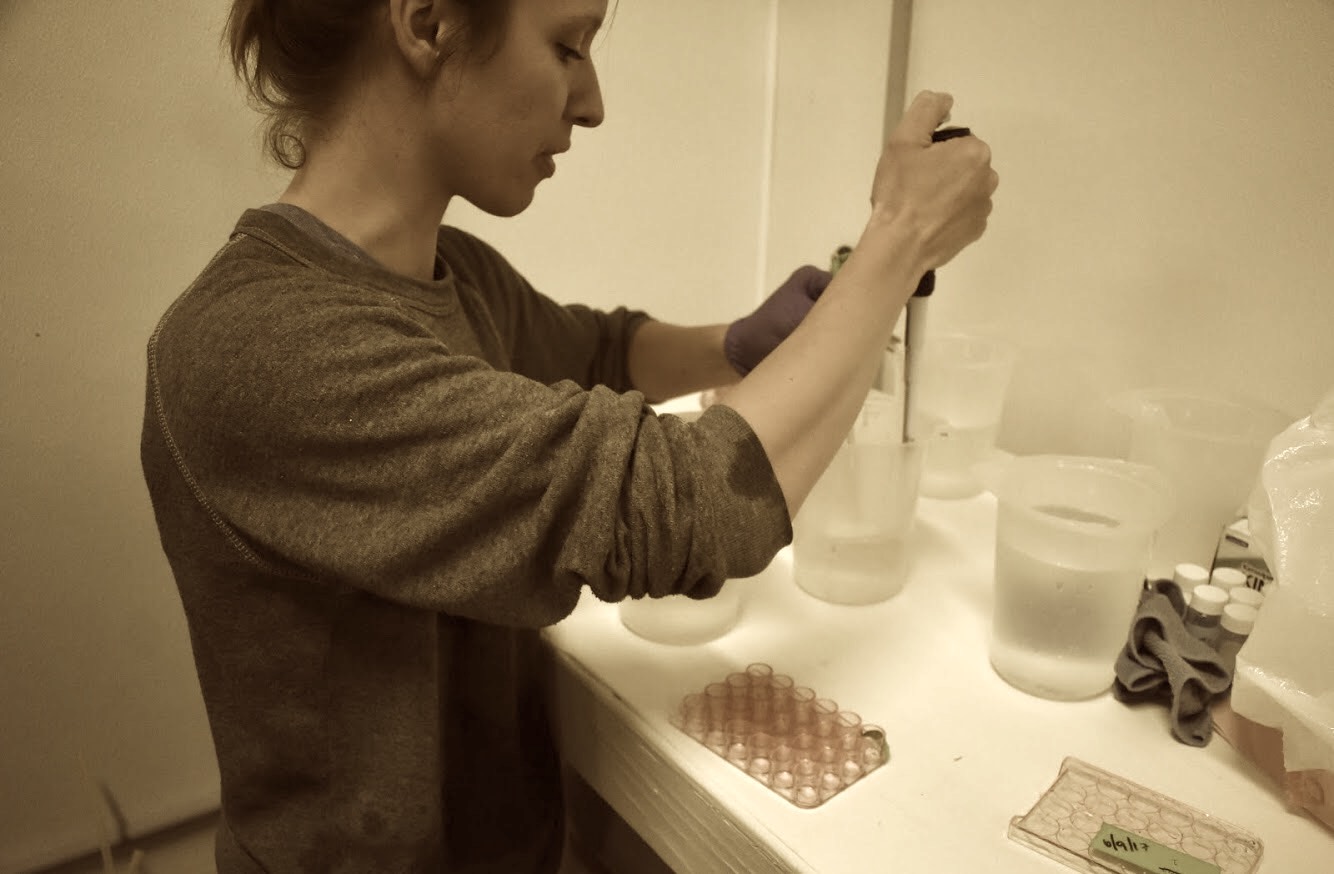First day of tissue prep, Alanna captstone / acute OA shock trial
Today Alanna and I got started processing juvenile Olympia oyster whole body tissues for RNA extraction. We are using the South Sound offspring (from Oyster Bay Cohort 1), from the 6C parents that were exposed to 7.3 pH and those that were unexposed, and which were held in control pH tanks (8.0), and acute low pH (7.0) for about 6 hrs.
We are processing 8 samples at a time, 2 per each treatment. First step is tissue disruption and homogenization in liquid nitrogen using a mortar and pestle, which we did today on the following samples:
| Sample # | Population | Parental Treatment | Offspring Treatment |
|---|---|---|---|
| 100 | SN | 6-Amb | control |
| 106 | SN | 6-Amb | control |
| 112 | SN | 6-Amb | acute low pH |
| 115 | SN | 6-Amb | acute low pH |
| 124 | SN | 6-Low | control |
| 126 | SN | 6-Low | control |
| 136 | SN | 6-Low | acute low pH |
| 136 | SN | 6-Low | acute low pH |
Note: after grinding in liquid nitrogen, no more than 5 mg were allocated into tubes, then 350 uL of Buffer RTE Plus was added, the mixture was vortexted vigorously, then all was transferred to the QIAshredder columns, and spun at maximum speed (21,300 rcf) for 2 minutes. The homogenate, which the protocol says can be held in -70 for “months”, was then put into the -80 for RNA extraction tomorrow. samples are held in collection tubes in the -80, rack #1, column 2, row 3. remaining dry ice is in the middle -80 freezer, top shelf, in a styrofoam cooler.
The oysters are small, about 5mg total tissue. I was able to save about 1/2 the ground tissue for only some of the samples (106, 112, 115, 126). If we get enought RNA with less than 5 mg of tissue, I will see if Alanna can do this for the rest of the samples.
